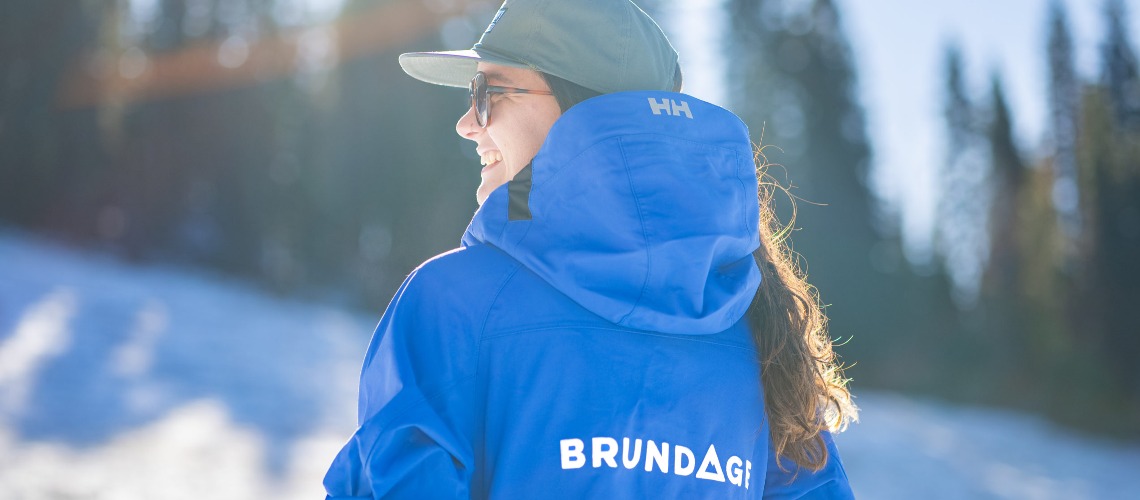Brundage Mountain Certified s Idaho’s First “Whitebark Pine Friendly Ski Area”

Brundage Mountain Resort’s efforts to support a threatened tree species have made it the first ski resort in Idaho to be certified as a Whitebark Pine Friendly Ski Area through the Whitebark Pine Ecosystem Foundation.
The certification recognizes the resort’s long and continued efforts to support the recovery of whitebark pine within its ski area boundary. The whitebark pine (Pinus albicaulis) is a threatened tree species that plays a critical role in the biodiversity of mountain ecosystems. The slow-growing tree, which can live more than 1,000 years, occurs in harsh, exposed sites at high elevations and helps stabilize soil, regulate runoff, and provide valuable nutrition to numerous wildlife species through its seeds.
“Brundage Mountain has been supporting whitebark pine recovery initiatives for more than 15 years, and we’re incredibly proud to be the first certified resort in our area,” says Brundage Mountain General Manager, Ken Rider. “The whitebark pine is an iconic feature at the top of Brundage Mountain and we hope to raise awareness of the threats it faces and the cooperative efforts to help it survive.”
Whitebark Pine was officially listed as a threatened species under the Endangered Species Act (ESA) in December of 2022, but work has been underway for several decades to try to strengthen the declining specie’s resistance to environmental threats. The whitebark pine is threatened by a fungus called white pine blister rust, by mountain pine beetle outbreaks and by changing wildfire patterns and climate change.
The highly recognizable silvery tree skeletons that populate the top of Brundage Mountain are dead whitebark pine trees. Brundage Mountain is also home to a living whitebark pine population that was identified as one of the most blister rust-resistant populations in the region.
Forest Service botanists collected cones from those healthy populations in 2018 to grow into seedlings that can be propagated and replanted at Brundage Mountain and at other sites around the region.
“Collection, propagation and outplanting of seeds collected from white pine blister rust-resistant populations is critical to the conservation of whitebark pine because these efforts will ultimately increase the prevalence of rust-resistant genetics on the landscape,” says Payette National Forest Botanist, Kristin Williams. “These efforts will also increase the likelihood that planted trees will survive into adulthood to produce additional rust-resistant seeds for dispersal.”
A group of nearly 50 volunteers fanned out across the summit of Brundage Mountain in October of 2022 to plant seedlings in carefully selected microsites where they are likely to survive and thrive. 600 seedlings were planted on the upper ridges of the mountain from upper Hidden Valley all the way to the upper slopes of the Lakeview Zone.
Earlier that year, work crews from the USDA Forest Service and Youth Conservation Corps joined Brundage Mountain employees to spend an entire week improving the prospects for the mature trees. Workers pruned off infected branches and removed competing species from around the threatened trees so they have less competition for nutrients and sunlight. The thinning also makes the tree stands more resistant to natural wildfire.
Identifying additional tree stands and studying potential whitebark pine seedling planting areas will be part of any future terrain expansions on the mountain.
“It’s important to us to be good stewards of the land on which we operate,” says Rider. “We’re excited to educate the public on the importance of the whitebark pine in the subalpine ecosystem and to keep moving forward with our conservation efforts. We’re also grateful for the partners who are working with us in these efforts; the Payette National Forest, Youth Conservations Corps and the McCall Heartland Chapter of the Idaho Master Naturalists have all been incredibly helpful.”
“The Forest Service is grateful for meaningful partnerships in our local community, and we appreciate the collaborative effort to conserve whitebark pine,” says Payette National Forest Public Affairs Specialist, Kelly Martin.
Brundage Mountain’s guests will find information on the whitebark pine recovery efforts inside the resort’s main lodge and on outdoor signage displayed on the mountain itself.













